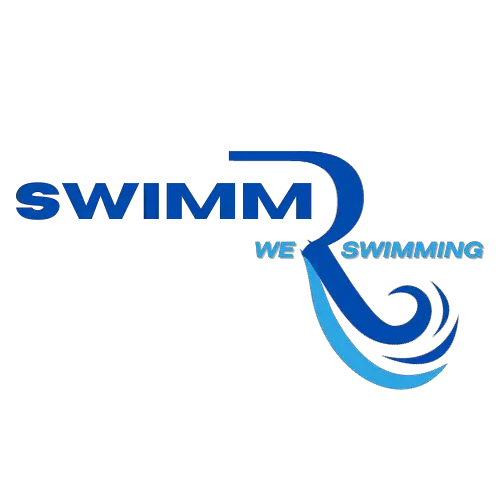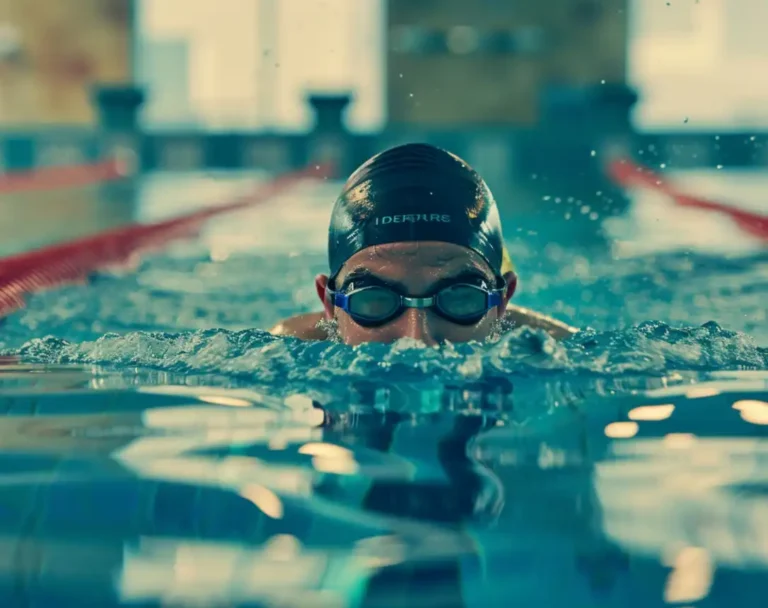Dive into the powerful benefits of swimming as we explore what muscles does swimming work and why this full-body workout engages. From the gentle caress of water to the demanding push against its resistance, swimming is not just an exercise but a symphony of strength, endurance, and flexibility.
It tones your core, strengthens your shoulders, and empowers your legs, making every stroke a step towards holistic fitness. Whether you’re a seasoned swimmer or just starting, understanding the muscular benefits can transform your approach to this aquatic discipline. Let’s unravel the mystery of the muscles swimming works.
Understanding Swimming and Its Benefits
Ever since I plunged into the world of swimming, I’ve reaped a cascade of benefits that have transformed my fitness routine. It’s an exceptional exercise that delivers a full-body workout, enhancing cardiovascular fitness and building strength without overstressing the body. Swimming engages major muscle groups, delivering a potent aerobic workout that caters to all ages.
What makes swimming stand out from other forms of exercise is its unique combination of cardio and strength training in one fluid motion. With each stroke, your muscles resist against the water, building endurance and muscle tone. The buoyancy of water also protects your joints, allowing you to perform a cardio workout without the harsh impact of activities like running.
Another striking benefit lies in the heart health improvements. Swimming is a cardiovascular exercise that boosts heart and lung function, promoting improved circulation and lung capacity. This, in turn, contributes to overall improved aerobic capacity, making swimming a top-notch cardio workout.
I can affirm that swimming is an ideal exercise for those seeking a comprehensive workout. It’s a sport that brings both joy and health, wrapping cardio, strength, and endurance training into an exhilarating package that has improved my life profoundly.
Major Muscle Groups Worked by Swimming
Every time I dive into the pool, I’m not just cooling off—I’m engaging a symphony of muscles across my entire body. Swimming is my full-body workout, targeting major muscle groups with every stroke.
Upper Body Muscles
Shoulders & Arms: Each stroke puts my deltoids to work, providing that power for propulsion. My biceps and triceps engage as I pull the water, and my forearms get a workout from stabilizing my arms during each phase of the stroke.
- Latissimus dorsi muscles (upper back): This swim session is incomplete without these muscles; they’re crucial for pulling my body through the water.
- Pectoral muscles (chest): They’re continuously contracting to help me reach forward and complete each stroke.
- Trapezius (upper back muscles): They support my shoulder blades and contribute to my swimming posture.
Core Muscles
Abs & Core Stability: Keeping my body aligned and aiding in the rotational movement, my core muscles, including the abs and obliques, are essential for efficient swimming.
- Latissimus dorsi: Beyond my back, they play a part in core rotation and stability, especially during front crawl and backstroke.
Lower Body Muscles
Glutes & Legs: My glutes maintain my leg alignment and contribute to the powerful kicking motions.
- Quadriceps & Hamstrings: These muscles alternate between flexing and extending my hip and knee joints, providing that necessary kick strength.
- Calves: They help me point my toes during kicks, adding finesse to my swimming technique.
Key Swimming Strokes and Associated Muscles
Swimming is a fantastic way to work various muscle groups across your body. Different strokes target different areas, so let’s jump right in and explore the muscles used in each of the key swimming strokes.
Freestyle Stroke and Muscles
I glide through the water with every freestyle stroke, engaging my entire body. My shoulders rotate with each reach, primarily working my latissimus dorsi (lats), while my biceps and triceps assist in pulling the water.
Primary Muscles:
- Latissimus dorsi
- Biceps
- Triceps
Secondary Muscles:
- Pectoralis major
- Forearms
- Quadriceps (for the kick)
Backstroke and Muscles
When I flip over for the backstroke, it’s a whole new set of muscles at play. The continuous arm rotation tones my trapezius muscles and the lats, but it’s my legs doing the kick that really feel the burn, especially my hamstrings.
Primary Muscles:
- Latissimus dorsi
- Trapezius
Secondary Muscles:
- Hamstrings (for the kick)
- Calf muscles
Breaststroke and Muscles
Breaststroke feels like a dance underwater. My chest muscles, particularly the pectoralis major, propel me forward, along with a powerful kick that engages muscles in my inner thighs and glutes.
Primary Muscles:
- Pectoralis major
- Glutes
Secondary Muscles:
- Adductors
- Hip flexors
Butterfly Stroke and Muscles
The butterfly stroke is my personal challenge—requiring strong core muscles for the undulating motion. This stroke gives my lats a major workout and involves my shoulders, pecs, and arms to lift my body above the water with each stroke.
Primary Muscles:
- Latissimus dorsi
- Deltoids
- Pectoralis major
Secondary Muscles:
- Core (for stabilizing)
- Biceps and triceps (for arm movement)
Swimming Techniques for Muscle Engagement
Engaging muscles effectively while swimming hinges on technique, resistance, and the right tools. I’ll unveil how I optimize my swim workouts for maximum muscle engagement.
Proper Form and Technique
Form is foundational. I keep my body aligned and movements smooth to slice through the water, reducing drag and ensuring that my muscles work efficiently. Proper technique translates into powerful propulsion, and this means getting the basics right:
- Streamlined body position: Reduces resistance, demands less effort.
- Consistent kicking: Engages leg muscles for better stability and speed.
- Coordinated strokes: Maximizes muscle recruitment across my body.
Breathing and Propulsion Techniques
Breathing techniques can’t be underestimated. Coordinating my breath with strokes not only boosts oxygen intake but also stabilizes my body, offering rhythmic propulsion. Here’s my checklist:
- Exhale underwater: Prevents breath-holding tension, conserving energy.
- Inhale quickly: Aligns with arm recovery for seamless movement.
By syncing my breathing with my strokes, I intensify the workout for my lungs and core, making every lap count.
Use of Equipment
Incorporating equipment like paddles and fins adds a twist to my swim sessions. They increase resistance, which builds muscle strength and endurance:
- Paddles: Enhance arm strength, refine my stroke technique.
- Fins: Boost leg power, improve my kick technique.
By using paddles and fins, I turn my swim into a full-on resistance training without hitting the gym.
Health and Fitness Benefits of Swimming
I can’t wait to share how swimming serves as an impressive conduit for health and fitness. It’s an excellent form of strength training that not only helps you build muscle and enhance muscle mass, but it also boost your cardiovascular health and lung capacity. Let’s dive into the specifics.
Building and Maintaining Muscle Mass
Swimming is a full-body workout targeting various muscle groups. It works wonders on the upper back, core, and even the lower back muscles, essential for core stability. Engaging in regular swimming sessions contributes significantly to:
- Muscle strength: Each stroke you take acts against the resistance of water, which is nearly 800 times denser than air, making for an effective muscle-building exercise.
- Strong core: The core muscles play a vital role in swimming, providing power and flexibility. This is crucial for both performance and preventing injuries.
Improving Cardiovascular Health
As I stroke through the water, my heart and lungs work in tandem, leading to improved lung capacity and cardiovascular fitness. Swimming involves:
- Endurance: It helps build endurance, which, in turn, aids in the reduction of fatigue during exercise and daily activities.
- Recovery and rest: The low-impact nature of swimming ensures that stress on the joints is minimal, making it an excellent option for active recovery days.
So, as I glide through the water, it’s exhilarating to know the myriad of benefits my body is reaping with every move.
Supportive Exercises and Recovery
I’ve discovered that the most effective swim training doesn’t just happen in the pool. To enhance strength and speed, it’s essential to integrate supportive exercises and implement mindful recovery strategies. Let’s jump into the specifics that make these components a game-changer in your swimming routine.
Cross-Training for Swimmers
Running: Hitting the pavement improves cardiovascular endurance, directly benefiting my swim sessions. Cycling: A low-impact alternative, cycling builds my leg strength, especially the gastrocnemius muscle, without excessive strain. Strength Training: Incorporating exercises such as bench press and core exercises not only boosts my overall muscle strength but also helps maintain proper posture in the water.
Pilates: As a swimmer, I focus on my core to power my strokes. Pilates has been instrumental in improving my core stability and, in turn, my swimming technique.
Recovery Techniques and Rest
After an intense swim, recovery is crucial. Here are the techniques I rely on:
- Rest: Adequate sleep is non-negotiable for muscle repair.
- Protein Intake: I ensure my diet includes enough protein to aid in the recovery process.
- Recovery Techniques: Post-workout, I use foam rolling and stretching to reduce muscle soreness and improve flexibility.
Swimming Across Demographics
Imagine the sensation as I glide through the water, each stroke an orchestrated movement engaging my muscles. Swimming isn’t just my passion; it’s a full-body workout that gracefully defies age limits. Whether you’re a toddler splashing around or a senior maintaining fitness, swimming serves as a universal regimen for all demographics.
Children and Adolescents: In these formative years, swimming is more than play. It lays the foundation for a lifetime of health benefits, working on enhancing cardiovascular fitness, boosting strength, and improving coordination and balance.
- Cardiovascular Endurance
- Muscle Strength
- Coordination and Flexibility
Adults: Maintaining a career, family, and social life can make it tricky for adults to find time for exercise. Yet, many turn to swimming as a respite – a meditative escape that challenges the body. For adults, swimming is an effective way to manage weight, relieve stress, and strengthen the core.
- Stress Relief
- Weight Management
- Core Strength
Seniors: As I ponder aging gracefully, I note swimming’s low-impact nature which protects the joints while still providing ample opportunities to retain muscle mass and flexibility.
- Joint Protection
- Muscle Maintenance
- Flexibility
I encourage individuals of all ages to discover the transformative power of swimming. Dive in, the water’s fine, and the health benefits are even better!
FAQ – Frequently Asked Questions
What primary muscles does swimming strengthen?
Swimming strengthens major muscle groups: shoulders, back, abs, legs, glutes, and chest, offering a comprehensive workout.
Does swimming improve muscle tone?
Yes, swimming improves muscle tone and definition by engaging various muscle groups in a low-impact, resistance-based way.
Can swimming build muscle mass?
While swimming enhances muscle endurance and tone, building significant mass requires resistance training on top of aquatic workouts.
Thanks for diving into the details of what muscles does swimming work. We’d love to hear how swimming has shaped your fitness journey. Share your experiences and insights in the comments below or on social media platforms like Instagram and Pinterest. Let’s keep making waves together!






